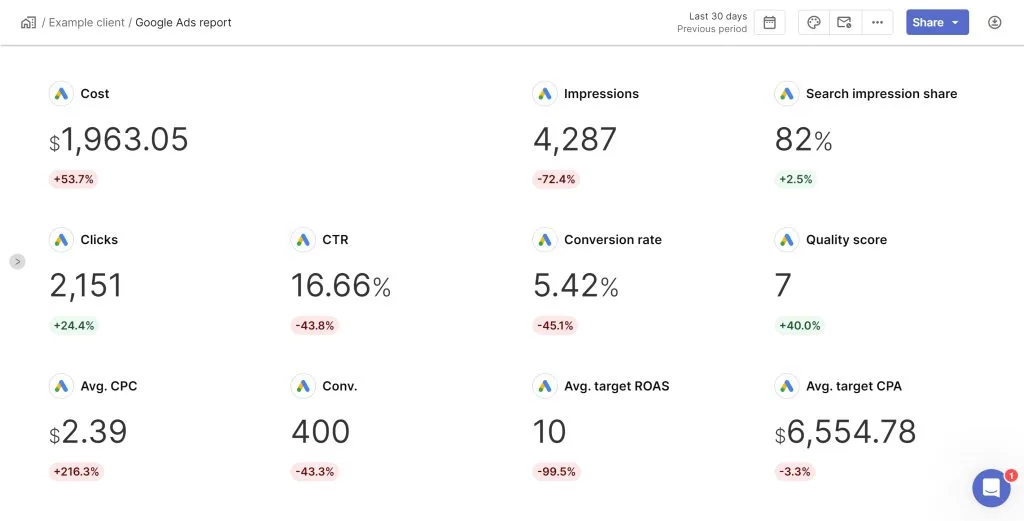Google Ads have emerged as one of the best marketing tools for businesses to connect with the potential customers, create brand awareness and generate revenue. However, starting a campaign is not as easy as pressing the “submit” button and hoping to get results. The final step of ad submission is where the magic happens—optimization. it can be the factor that turns an otherwise well-structured campaign into a failure that would not produce the results you want. It does not matter whether you are a beginner or a guru in running campaigns; optimizing your Google Ads is a must-do for succeeding.
Table of Contents
In this guide, we’ll go in deep on how you can effectively optimize your campaigns after having submitted your ad. From making your account structure robust to optimization of your bidding strategy, audience targeting, and ad creatives, all these steps will make your campaigns into super-performing marketing machines.
Why Optimization Matters in the Final Step of Ad Submission
Optimization is the essence of a profitable Google Ads campaign. Once your ads are submitted, they are entering an extremely competitive battleground where there are thousands of other advertisers trying to get the attention of your target customers. This would mean that without fine-tuning your ads are in danger of being lost in the various ads by your competitors. The final step of ad submission makes sure that your campaigns are not only active but also at their best.
Key Benefits of Optimization
- Improved ROI: Optimize your campaigns to minimize your wasted spend and maximize your returns.
- Higher Quality Scores: Quality Scores have a major effect on your CPC (cost per click) and ad rank.
- Better Audience Targeting: Make sure that your ads find their way to the target audience at the right time.
- Enhanced Ad Relevance: Align your ad copy and landing pages with the user intent for optimum conversions.
Step 1: Perfecting Your Account Structure
A well-organized Google Ads account is the backbone of successful campaigns. The lack of organization means that your budget is at risk to be wasted, your targeting is irrelevant, and your advertisements don’t perform. To have successful Google Ads optimization, segregate your campaigns according to product categories, services, or marketing objectives. For example, if you are dealing with an e-commerce business, you can optimize Google Ads by having different information campaigns for men’s clothing, women’s clothing, and accessories.

Pro Tips
- Use standard nomenclature for easier management and analysis of campaigns.
- Divide ad groups into tightly themed clusters. For example, an ad campaign for “running shoes” could have the ad groups of “men’s running shoes,” “women’s running shoes,” and “trail running shoes”.
Periodically assess and optimize the campaign structures according to the performance metrics.
For businesses that are handling many clients or campaigns on a large scale, consider using a Google AdWords agency account for simplification of the process.
Step 2: Refining Keywords and Search Terms
Keywords are like the engine that keeps your Google Ad campaigns running. The final step of ad submission requires you to dive deep into your keyword performance data. Consider using the search terms report to know the queries that are triggering your ads and adjust your keywords list accordingly.
Strategies for Keyword Optimization
- Target High-Intent Keywords: Target keywords for transactions with obvious buying intent like “buy,” “hire,” and “best”.
- Leverage Long-Tail Keywords: These tend to have less competition with increased conversion rate. For instance, it is better to write “affordable women’s trail running shoes”, not “running shoes”.
- Build a Negative Keyword List: Eliminate irrelevant searches to save spend.
Keep in mind that keyword optimization is a continuing exercise. Keeping your list updated at all times will ensure that you are ahead of your competitor.
Step 3: Crafting Compelling Ad Copy
Your ad copy is the first encounter your would-be customers have with your business. In order to stand out, your ads should capture interest whilst remaining relevant. The final step of ad submission is aimed at testing and shaping up an ad copy in order to obtain the maximum click-through rates (CTRs).
Tips for Writing High-Performing Ads
- Use numbers and stats as headliners (“Save 50 % on Winter Jackets!”).
- Provide solutions for the user pain points.
- Have powerful calls-to-action (CTAs) such as “Shop Now” or “Learn More”.
- A/B test your headlines and descriptions and observe which land best with your target audience.
Dynamic keyword insertion and ad customizers can as well make your ads more relevant to individual search queries. If you do not know where to start, a Google advertising agency Dubai can help with expert ad copy strategies for your market.
Step 4: Optimizing Landing Pages
A correctly optimized landing page is very important in turning clicks into customers. When Google ranks their algorithms, Landing Page experience forms a part of your Quality Score, therefore, it is crucial that your page contents are aligned to the ad copy.
Best Practices for Landing Pages
- Consistency: Make sure that your landing page is consistent with the promise of your ad.
- Mobile-First Design: The traffic is mostly through the mobile devices, therefore your page has to load fast and run smoothly on smaller screens.
- Clear CTAs: Help users to perform the desired action, such as purchase or fill out a form.
- Minimize Distractions: Simplify your site by eliminating unnecessary things that may draw users’ attention and prevent them from converting.
For businesses struggling with low conversion rates, an expert Google Ads agency UAE can help redesign and optimize landing pages to improve performance.
Step 5: Advanced Audience Targeting
The right audience targeting is another important aspect of optimization. There are many tools provided by Google Ads so that your ads will be served to the people most likely to convert.

Key Targeting Options
- Remarketing Lists: Reconnect with the users that have already been in contact with your website.
- In-Market Audiences: Target users who are highly researching products or services similar to yours.
- Custom Audiences: Create custom audiences on the basis of interests, behavior, or demography.
Better audience segmentation ensures every dollar you spend reaches the right people. But if your campaigns are underperforming or affected by policy violations, a professional Google Ads suspension recovery service can help fix account targeting issues and get your campaigns back on track.
Step 6: Adjusting Bidding Strategies
Bidding is a very important consideration when it comes to your ad placement as well as overall campaign success. Google provides several automated bidding strategies, but it is your goals that define which one to choose.

Recommended Bidding Strategies
- Target CPA: Perfect for lead generation campaigns with certain cost-per-acquisition goals.
- Maximize Conversions: Is targeted at maximizing the conversion at your budget.
- Target ROAS: Good for e-commerce campaigns in which return on ad spend is the top priority.
Check and revise bids according to the data available on performance. For the large scale campaigns the use of tools such as the Google Ads Scripts can automate the bidding process.
Step 7: Embracing Automation and AI
Google Ads has unveiled automatic campaign functionalities that can help to streamline the management process whilst driving excellent output. The final step of ad submission is the perfect time to integrate these tools into your strategy.
Automation Tools to Explore
- Responsive Search Ads: Google’s AI tests and optimizes combinations of ads automatically in a bid for enhanced performance.
- Smart Bidding: Machine learning adjusts bids depending on the user intent in real time.
- Scripts and Rules: Automate tasks like budget pacing and keyword adjustments.
Through automation, you can save the energy for strategy and creative work as Google’s AI does the heavy part.
Step 8: Monitoring and Reporting
Just because your ads are live, it doesn’t mean the work has to be over in terms of optimization. Monthly monitoring and reporting are essential in helping to know which part is working and which one needs to be improved.

Key Metrics to Track
- Conversion Rate: Measure how many clicks turn into actual customers.
- CTR: Assess the degree of engagement for your ads.
- Quality Score: Find out the aspects where one can improve ad relevance or landing page experience.
- ROAS: Make sure that your campaigns generate profits and not just traffic.
Custom dashboards in Google Ads or Google Analytics will help to make the performance tracking task much easier. For businesses with several accounts managed, a Google AdWords agency account can automate reporting and analysis.
Final Thoughts: Take Control of Your Google Ads Success
The final step of ad submission is all about continuous improvement. From optimizing your keywords and ad copy to the utilization of automation and advanced targeting, every optimization effort gets your campaigns under the brink of peak performance. Keep in mind Google Ads is not a “set it and forget it” type of platform either. The most successful campaigns are based on consistent testing, learning and adjusting.
If you’re ready to make your campaigns scale-worthy, let Admoon do it for you. Being an expert Google Ads agency in UAE we are focused on developing high performing advertisement campaigns that suit the business goals perfectly. Either to resolve Google Ads account problems or enhance your current campaigns, our team of experts has your back in every step of the way.
Don’t let your competitors outshine you—partner with Admoon today and experience the power of expert Google Ads management.



